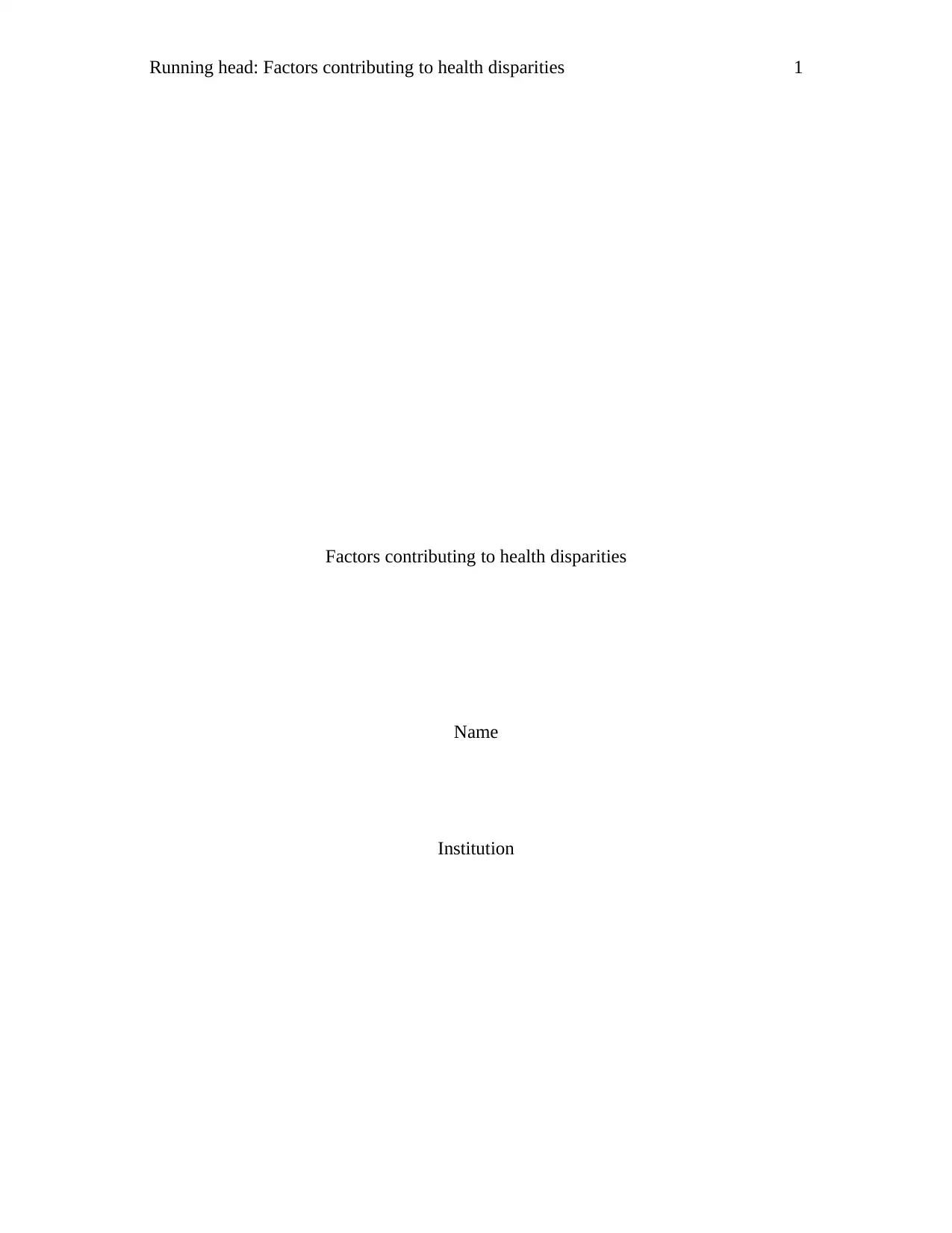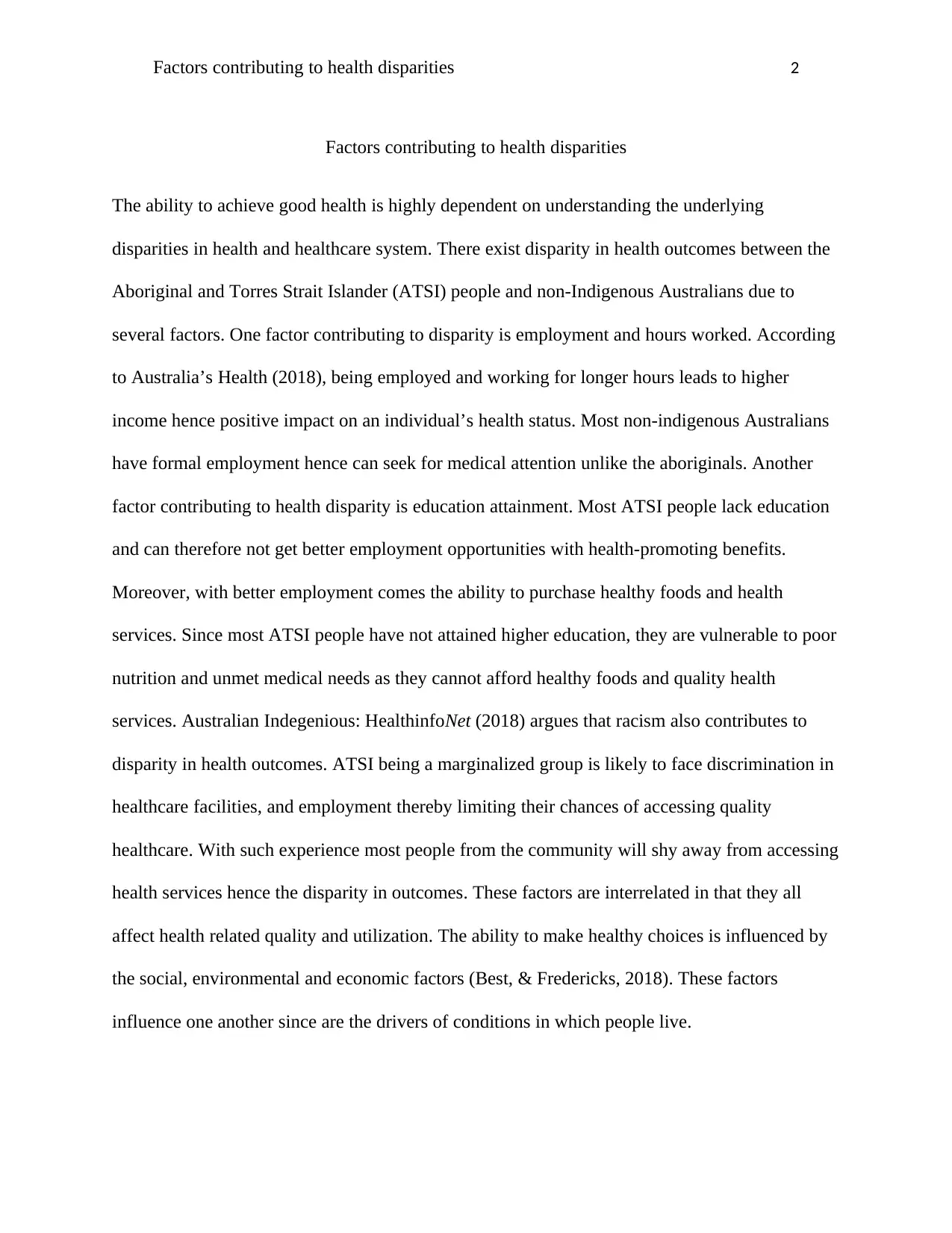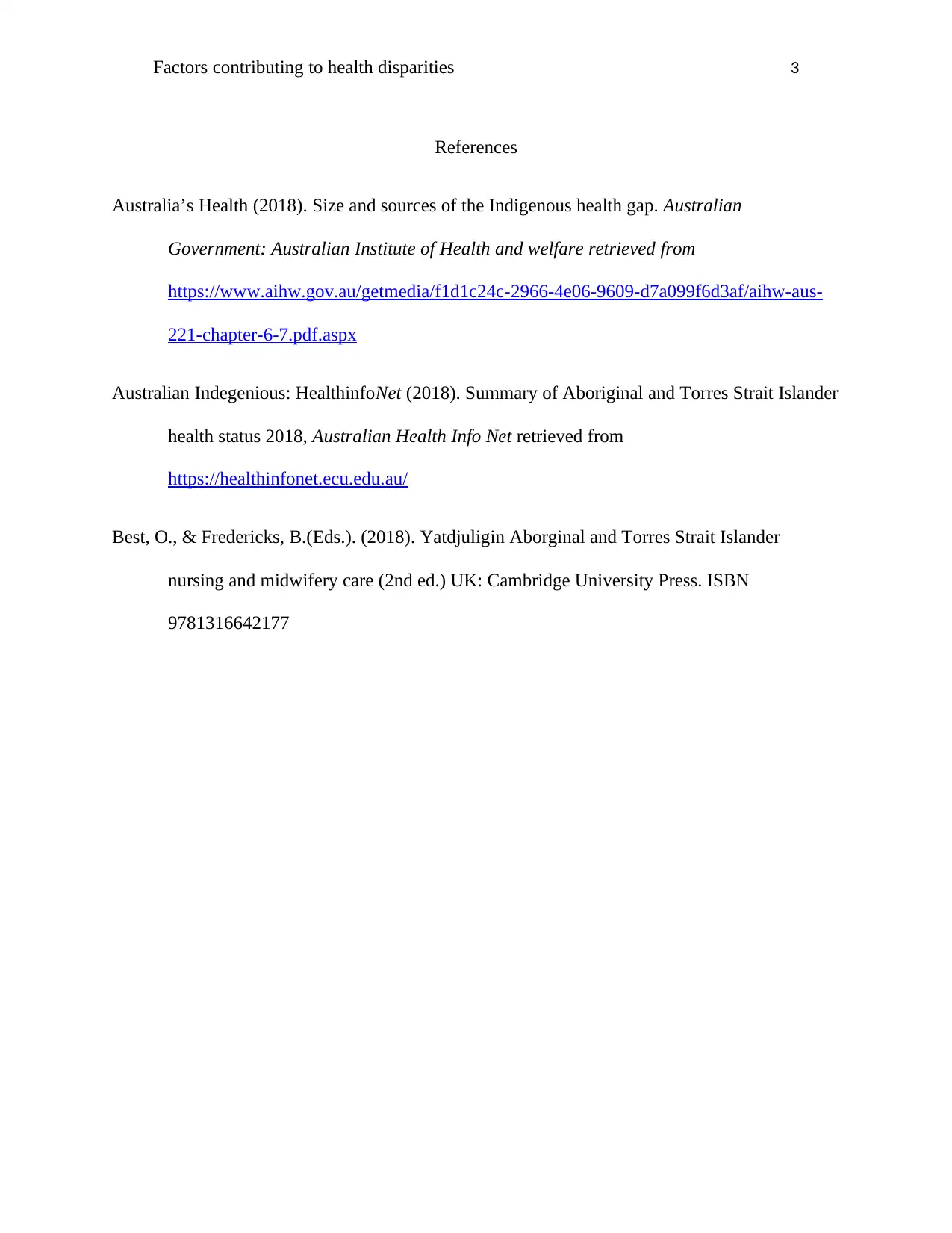Analysis of Factors Contributing to Health Disparities in Australia
VerifiedAdded on 2022/08/22
|3
|425
|21
Homework Assignment
AI Summary
This assignment analyzes the factors contributing to health disparities between Aboriginal and Torres Strait Islander (ATSI) people and non-Indigenous Australians in Australia. It identifies employment, education, and racism as key drivers of these disparities. The paper explains how employment and working hours influence income and health status, with non-Indigenous Australians often having an advantage. It highlights the impact of education attainment on employment opportunities, access to healthy foods, and healthcare. Furthermore, the assignment discusses how racism and discrimination in healthcare facilities and employment limit ATSI people's access to quality healthcare. The factors are presented as interrelated, influencing the social, environmental, and economic factors that shape health choices and overall health outcomes. The assignment references relevant literature to support its arguments.
1 out of 3









![[object Object]](/_next/static/media/star-bottom.7253800d.svg)